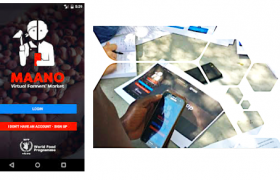
Amarante recently had an opportunity to work on an exciting project in Zambia for the World Food Program (WFP) and UNCDF. Using human centred design (HCD) approach and in collaboration with Yux, we travelled to the southern provinces of Zambia and talked to farmers and buyers, users of Maano, a virtual farmers market.
Maano meaning “intelligence” in the local language Tonga, is an e-commerce platform designed to help smallholder farmers access markets. The offer is available via a mobile app and the business model is one where smallholder farmers’ produce is aggregated thanks to a network of Maano ambassadors (lead farmers). Given this, buyers get access to quality produce and both sets of users are able to discuss and fix acceptable market driven pricing. Maano helps increase smallholder farmers’ bargaining power as it provides access to information on what their crops are worth on different markets. Finally, Maano also creates a stronger sense of community among its users and has the potential to be a precious databank that can be leveraged to further build resilience and help smallholder farmers’ increase their potential profitability.
A lot is left to done as stakeholders explore the various other use cases Maano could offshoot into and the increased positive impact that it could have on all involved in the community; from more knowledge sharing to access to better inputs, other financial and non-financial products and services, to creative ideas for transportation of produce,…
Our assignment was aimed at understanding Maano’s current User Experience and User Interface (UI/UX) design and recommending ways to improve user comfort and adoption of the app. We unearthed some very interesting insights from the field: Read on about the surprises, discoveries and what a key role HCD can play in furthering #Access2Markets, #FinancialInclusion and #m-agri